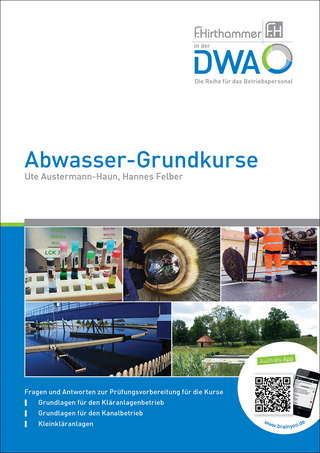
Shift Teaching Forward
Jossey-Bass Inc.,U.S. (Verlag)
978-1-119-90020-7 (ISBN)
How can we prepare learners for an ever-changing world and job market? What are 21st century employers looking for in applicants, and how do we coach jobseekers to be ready on day one? Now is the time to rethink and expand how we prepare job seekers for the roles that will launch their careers. In Shift Teaching Forward, Kelly Cassaro gives educators the knowledge, insight, and practical advice they need to prime students for the social, emotional, and behavioral skills they need to thrive in tomorrow’s workplace.
Shift Teaching Forward showcases the ecosystem of elements that characterizes a successful job-training program. As educators, we need to focus not only on standards alignment and technical skills, but also on the soft skills that will make students stand out as job candidates. In today’s labor market, being able to do the job is just the first step. We need to prepare students to interact with others, contribute to inclusive workplaces, and become collaborators—whatever their industry or career goals. This book shows the way.
Discover why social, emotional, and behavioral skills are so critical for workplace success
Get ideas and insight for integrating soft skills into secondary, postsecondary, and vocational training programs
Develop training programs that will improve collaboration and inclusivity in your workplace
Prepare learners for the future of work by embracing the full range of job readiness skills
This book is ideal for secondary, postsecondary, and vocational educators and administrators, and it will also appeal to organizations looking to develop in-house talent.
KELLY CASSARO is Chief of Learning at Generation, a nonprofit that tackles global unemployment. She has spent twenty years in the U.S. K-12 and global workforce development spaces as a teacher, school administrator, staff developer, curriculum designer, board member and strategic leader.
Introduction 1
1 The Jobs Landscape Is Changing 9
Change Is the Only Constant 10
The Pandemic and Everything After 13
Understanding the Future of Work 14
Who Does the Work 16
How the Work Is Done 19
Giving Students the Advantage 25
2 The Connection between Education and Employment 27
The Bridge between Secondary Education and Employment 29
Challenges and Barriers 33
Sage on the Stage, Guide on the Side 34
Evolving Mindsets 38
The Importance of Equity in Education 39
A Sense of Belonging 42
Embedding Employability into the Curriculum 43
Guaranteed Work Experience 43
3 Two Frameworks for Understanding Social-Emotional Skills 45
SEL in the Jobs-Training Landscape 46
What Is Social and Emotional Learning? 49
Which SEL Skills Need to Be Taught? 51
The CASEL 5: Core SEL Competencies 52
Durable Skills Framework 60
What Are Durable Skills? 61
Closing Thoughts on Social and Emotional Learning 74
4 Does Teaching Social-Emotional Learning Work? 77
Emotional Intelligence and Academic Achievement 78
Links between Moral Reasoning and Academic Performance 80
School-Wide SEL Programming’s Impact on Academic Performance 81
School-Wide SEL Programming’s beyond Academic Achievement 82
Characteristics of Successful SEL Programs 83
Longevity of Impacts from SEL Interventions 86
Emotional Intelligence and Job Performance 88
The Case for SEL: A Summary 89
5 Evaluating Social-Emotional Learning Needs, Activities, and Outcomes 91
Start with the End in Mind 92
What Does Formative Evaluation Involve? 94
Eight Steps to Support the Formative Evaluation Process 94
What Does Process Evaluation Involve? 98
Exploring the Kirkpatrick Model 99
What Does End-of-Program Evaluation Involve? 102
Best Practices in Experimental Design 104
How Do We Robustly Measure SEL? 106
Ethics 109
6 Overcoming Student-Specific Employability Challenges 115
Increasing Exposure and Igniting Interest 117
Increasing Social Capital 119
Identifying and Overcoming Pressures 120
Identifying Student Strengths 122
Cultivating a Sense of Belonging 123
Challenges beyond the Educator’s Reach 125
7 Establishing Common Language for an Employability-Driven Classroom Culture 127
Common Language for Career-Focused Competencies 128
Common Language for a Culture of Learning and Teaching 131
8 Classroom Strategies to Increase Employability 143
Three Strategies for Creating a Supportive Culture 144
Role Plays and Case Studies 150
Bring In the Learning and Take Out the Learning 155
Embrace AI in Your Teaching Practice 158
Micro-Moments for Increased Career Awareness 160
9 Developing Curriculum Where Employment Comes First 169
The Employability-Focused Curriculum Design Process 170
Employment at the Center of Design 188
A Note on Design Thinking 190
Conclusion 193
There Is Power in Community 194
Start Somewhere, and Start Small 195
Everything Begins with Intention 197
Go Forward 198
Resource Guide 199
References 207
Acknowledgments 211
About the Authors 213
Index 215
| Erscheinungsdatum | 14.02.2024 |
|---|---|
| Verlagsort | New York |
| Sprache | englisch |
| Maße | 150 x 226 mm |
| Gewicht | 272 g |
| Themenwelt | Sozialwissenschaften ► Pädagogik ► Berufspädagogik |
| Sozialwissenschaften ► Pädagogik ► Erwachsenenbildung | |
| ISBN-10 | 1-119-90020-4 / 1119900204 |
| ISBN-13 | 978-1-119-90020-7 / 9781119900207 |
| Zustand | Neuware |
| Informationen gemäß Produktsicherheitsverordnung (GPSR) | |
| Haben Sie eine Frage zum Produkt? |
aus dem Bereich


